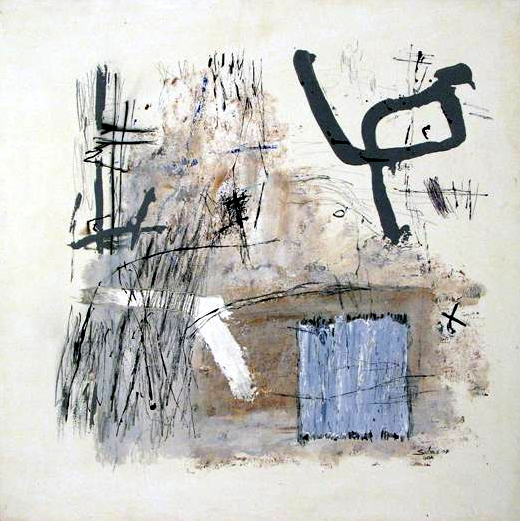Is it possible to understand? The trick is NOT TO TRY
Many people I’ve met say they cannot understand abstract art. Actually it’s not as hard as you might think: all it requires is an open mind and a wild imagination.
“Everyone wants to understand abstract art. Why not try to understand the song of a bird?” Pablo Picasso once asked.
Russian artist Kasimir Malevich was a pioneer of pure abstraction. He aimed to distil his pictures into a communication of the most basic human feelings. He made waves with his work “suprematist” from 1913 – a black square on a white background.
I know. There are those who say such work is not art at all. But in truth, the advent of abstract art was a bi-product of human advancement – and to dismiss it is to brush off a very rich tradition.
For centuries, Western art sought to depict reality in relatively exact terms. But by the 19th century, arts and cultures other than those of Europe became increasingly accessible – and with it a growing understanding in the global art world that an artistic visual experience need not be so closely tied to actual, on-the-ground references in the world. Increasingly, artists sought to depart from the constraints of their forebears, creating a new kind of art that would reflect the rapid changes taking place in philosophy and science.
And so was born the notion that it’s perfectly OK to depart from reality in depicting artistic images. All of this exists on a continuum, to be sure – from the partially abstract which takes just a few liberties in altering form, colour and other expressions to the totally abstract, which bears no resemblance at all to anything recognizable on earth.
The De Stijl movement in architecture dispersed anything reminiscent of brush work, and painters began freeing themselves from the obligations and flow of reality. Influenced by Cubism, Piet Mondrianand increasingly indulged in abstraction in the early 20th century. There were painting of grids of colours, with black or grey lines and other strokes.
By 1920, artists were taking great liberties. Bold colours exploded. Henri Matisse, James Whistler, John Constable, Cezanne were among the numerous contemporary artists who worked with abstraction. A pioneer of the abstract movement in America was Jackson Pollack, who reduced the act of painting to a physical act – throwing colours on a horizontal surface and letting it drip.
Indian artists Nasreen Mohamedi (1937–1990) created minimalist ink drawings with reverberating lines influenced by the clean forms of Islamic architecture and design. Arpita Singh (born 1937) did figurative work with pigment and very little oil forming cakes of paint.
G. Subramanyan, M F Husain, S Raza, F N Souza, Gaitonde, Tayab Mehta, Manjit Bawa, Jogen Chowdhry, Satish Gujral, Nagji Patel, Rekha Rao, Bharti Kher, RaviMandlik, Bose Krishnamachari, Nagji Patel, Yousf Ali and Krishna Reddy are all Indian artists who have departed from reality to achieve a certain transcendence.
How do you begin understanding abstract art? You must ‘understand’ abstract art with a different part of you, not the normally used familiar one. Essentially, you must accept that ‘it is what it is’. Don’t try to pinpoint an exact significance for an image. Look at it in the same way that you would listen to a symphony, or Picasso’s song bird. When you listen to music, you don’t hold onto the notes – you let them wash over your soul. Let your eyes linger, dance and play over the painting engulfing you as the notes of a symphony. Slipping around corners, following the twirls, twists and turns, dipping in and out of the surface, relax and travel around the piece without expectation. Examine the colors, forms, materials, surface, how they interact with the other. Take your time. Let the painting “speak” to you.
As far as interpretation of the viewer goes, there is no right or wrong. Among the beautiful qualities of abstraction is that it’s open to interpretation, which may widely differ from that of the artist’s concept. In abstract art, this matters not. The experience is both emotional and cerebral.
You will be amazed to find along the way, how the same painting extends different connotations and scenarios, when viewed over a period of time on your wall. In different natural light, and also on the mood swings you have, you will find new shapes and languages emerging.
The influential Russian painter and art theorist Wassily Kandinsky once said, “Of all the arts, abstract painting is the most difficult. It demands that you know how to draw well, that you have a heightened sensitivity for composition and for colours, and that you be a true poet.”
Among the large artist fraternity in Goa, one finds few abstractionists. These include Hanuman Kambli, Suhas Shilkar, Salvador Fernandes and Manjunath. Like their colleagues and predecessors around the world, these are folks who understand that when it comes to art and the human mind and heart, there are few limits. ?




